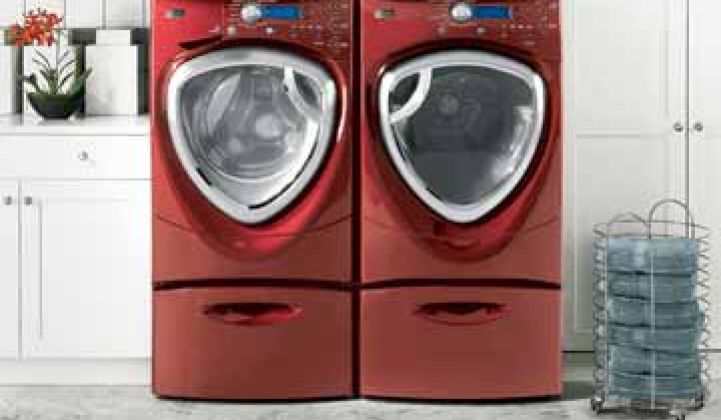Of all the choices for communication in the home area network, General Electric’s Appliances & Lighting division has declared that ZigBee is the best in show, according to a white paper released on Thursday.
The analysis examined Bluetooth, power line carrier-based communications, Wi-Fi and ZigBee for their ability to connect home devices to each other and the smart grid based on price, performance and power consumption. On all counts, GE concluded ZigBee was on top and could save U.S. consumers hundreds of millions of dollars each year. Unsurprisingly, this is the technology that GE has already adopted for its smart grid-enabled appliances.
PLC technology and Bluetooth were thrown out of the ring early in the discussion. PLC was dismissed on the grounds that the technology has not matured enough, yet was determined to be a possible secondary solution in the future. Bluetooth received slightly more consideration but was rejected because of its limited range and configuration as a star network rather than a mesh network.
And then there is the argument for ZigBee over Wi-Fi. The paper’s authors argue that ZigBee is the lowest-power networking technology, and therefore perfect for HAN applications.
ZigBee’s ability to be used in a mesh network configuration was a primary argument for its advantage over both Bluetooth and Wi-Fi. The author’s acknowledge that Wi-Fi mesh could be developed, but that would “require significant time” to bring the chipsets to market and bring the cost down.
On the issue of cost, GE examined its own price quotes from suppliers in Asia and found that ZigBee chip sets cost about $2 less per device at high quantities (more than 100,000 pieces a year) than Wi-Fi chip sets.
For those who are not moved by either of the previous arguments, GE then took a look at power consumption. The authors were not able to find recent data that could definitively say if one technology had an upper hand, so GE Appliances did its own study.
The study used custom firmware that sent a packet of data -- approximately 50 bytes -- every five minutes over the course of 24 hours. The total power was measured, including standby and tasks. The results found that the ZigBee chipset/module consumed about 0.39 watts over the 24-hour period, compared to 0.87 watts for Wi-Fi. The authors did note that with higher data throughput, ZigBee’s power consumption would increase while Wi-Fi would stay the same. However, they go on to say that if the power consumption rates they tested were accurate representations, the savings for an anticipated 750 million smart devices in homes by 2025 connected by ZigBee over Wi-Fi could reach $315 million annually.
"Given that cost-effectiveness and efficiency are key smart grid deliverables, the choice of ZigBee over Wi-Fi should be clear," Jeff Drake, advanced systems engineer, GE Appliances, and co-author of the white paper, declared in a statement.
That conclusion, however, assumes that every home will have five to seven smart devices by 2025 -- and that is certainly what GE Appliances is banking on.
Smart Homes/Smart Buildings

GE Says ZigBee is Better Than Wi-Fi
General Electric argues that ZigBee is superior to Wi-Fi on all fronts.

GE Says ZigBee is Better Than Wi-Fi
-
41Where Will DOE’s Loan Program Make the Next Climate Tech Investments?
-
15What the Frack Is Happening With Natural Gas Prices?
-
9With an Energy Crisis Brewing, No Peak in Sight for Emissions


